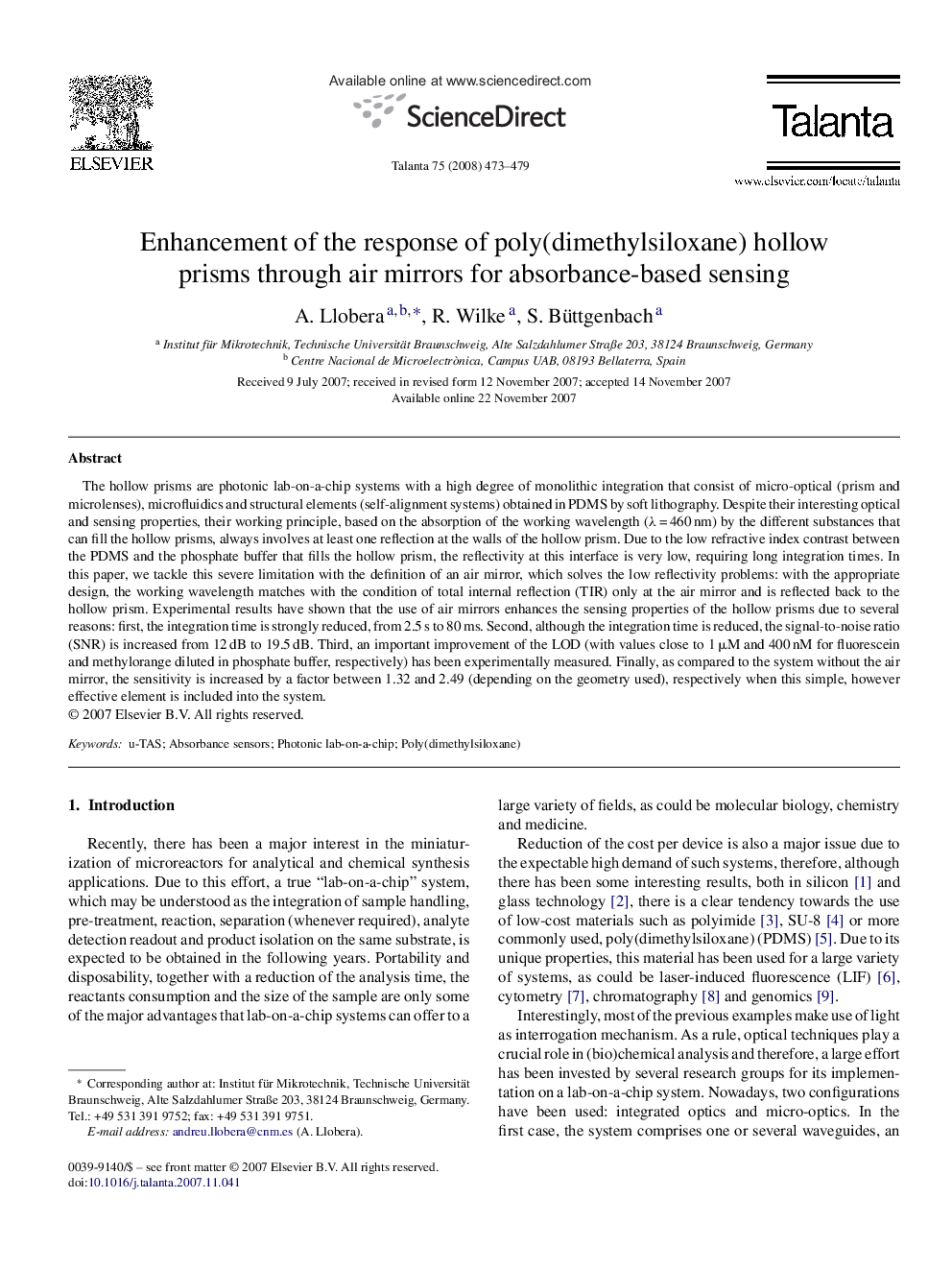| Article ID | Journal | Published Year | Pages | File Type |
|---|---|---|---|---|
| 1243910 | Talanta | 2008 | 7 Pages |
The hollow prisms are photonic lab-on-a-chip systems with a high degree of monolithic integration that consist of micro-optical (prism and microlenses), microfluidics and structural elements (self-alignment systems) obtained in PDMS by soft lithography. Despite their interesting optical and sensing properties, their working principle, based on the absorption of the working wavelength (λ = 460 nm) by the different substances that can fill the hollow prisms, always involves at least one reflection at the walls of the hollow prism. Due to the low refractive index contrast between the PDMS and the phosphate buffer that fills the hollow prism, the reflectivity at this interface is very low, requiring long integration times. In this paper, we tackle this severe limitation with the definition of an air mirror, which solves the low reflectivity problems: with the appropriate design, the working wavelength matches with the condition of total internal reflection (TIR) only at the air mirror and is reflected back to the hollow prism. Experimental results have shown that the use of air mirrors enhances the sensing properties of the hollow prisms due to several reasons: first, the integration time is strongly reduced, from 2.5 s to 80 ms. Second, although the integration time is reduced, the signal-to-noise ratio (SNR) is increased from 12 dB to 19.5 dB. Third, an important improvement of the LOD (with values close to 1 μM and 400 nM for fluorescein and methylorange diluted in phosphate buffer, respectively) has been experimentally measured. Finally, as compared to the system without the air mirror, the sensitivity is increased by a factor between 1.32 and 2.49 (depending on the geometry used), respectively when this simple, however effective element is included into the system.
